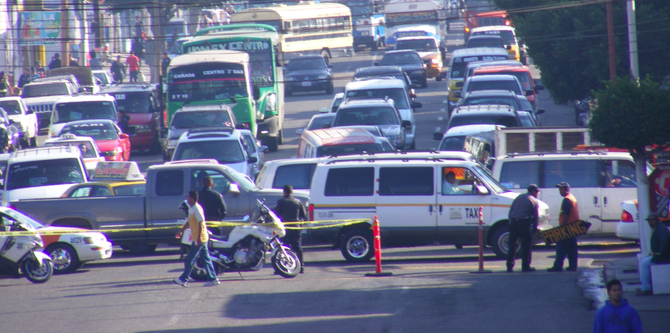 Facebook
Facebook
 X
X
 Instagram
Instagram
 TikTok
TikTok
 Youtube
Youtube

At around 8:30 a.m. on Tuesday, November 2, traffic became snarled in Centro de Tijuana, with all incoming vehicles on Calle Tercera diverted onto Calle Madero.
Mexico marked its 102nd year since the revolution of 1910. In that revolt, president Porfirio Díaz, now historically considered a dictator after some 35 years as the ruler of Mexico (including shenanigans that included jailing his political opponents and claiming elections while they were incarcerated) was overthrown in a revolt and subsequent revolution led by Francisco Madero. Díaz fled Mexico, taking exile in Spain, and eventually passed away in France in 1915. Madero took office in 1911 but was assassinated in 1913.
In Tijuana, a parade was held to commemorate the occasion, but little of the parade seemed to have to do with the historical event, save that the attractions filed down the main thoroughfare Avenida Revolución, for which the historical event was named. The main theme seemed to revolve around the competency of Tijuana’s local law enforcement.
The entire ordeal lasted for about four hours. The front end of the parade was most interesting, featuring law-enforcement officials showing their prowess at everything from motorcycle stunts to a mock take-down of pretend criminals on a Tijuana bus.
The street was lined with spectators, food vendors, and amateur photographers. By two in the afternoon, the streets had cleared and life in Tijuana resumed to normal.


At around 8:30 a.m. on Tuesday, November 2, traffic became snarled in Centro de Tijuana, with all incoming vehicles on Calle Tercera diverted onto Calle Madero.
Mexico marked its 102nd year since the revolution of 1910. In that revolt, president Porfirio Díaz, now historically considered a dictator after some 35 years as the ruler of Mexico (including shenanigans that included jailing his political opponents and claiming elections while they were incarcerated) was overthrown in a revolt and subsequent revolution led by Francisco Madero. Díaz fled Mexico, taking exile in Spain, and eventually passed away in France in 1915. Madero took office in 1911 but was assassinated in 1913.
In Tijuana, a parade was held to commemorate the occasion, but little of the parade seemed to have to do with the historical event, save that the attractions filed down the main thoroughfare Avenida Revolución, for which the historical event was named. The main theme seemed to revolve around the competency of Tijuana’s local law enforcement.
The entire ordeal lasted for about four hours. The front end of the parade was most interesting, featuring law-enforcement officials showing their prowess at everything from motorcycle stunts to a mock take-down of pretend criminals on a Tijuana bus.
The street was lined with spectators, food vendors, and amateur photographers. By two in the afternoon, the streets had cleared and life in Tijuana resumed to normal.
Comments